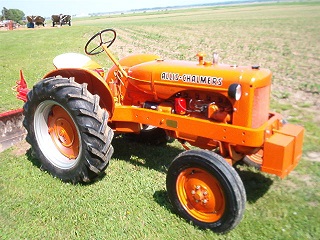| Author |
 Topic Search Topic Search  Topic Options Topic Options
|
Acguywill 
Bronze Level

Joined: 15 Jan 2024
Location: Vauxhall ab Can
Points: 148
|
 Post Options Post Options
 Thanks(0) Thanks(0)
 Quote Quote  Reply Reply
 Topic: V-belts Topic: V-belts
Posted: 02 Aug 2025 at 8:35pm |
|
Does anyone know where to find belts that don't have the useless Kevlar cords in them? My flail mower has 4 single belts that last maybe 10 hours on average. Once the Kevlar gets hot it gets brittle and the belts just snap. We never had issues with the old nylon ones, they could be halfway burned through and would still work. The Kevlar ones look good but are junk, this set lasted less than 4 hours and were never slipped even once. Oh and they are a metric size that nobody around here stocks. I keep a spare set but had to put them on Wednesday night so ordered new ones Thursday morning and of course they won't be here until Monday. These are Gates brand.
|
 |
|
Sponsored Links
|
|
 |
steve(ill) 
Orange Level Access


Joined: 11 Sep 2009
Location: illinois
Points: 88293
|
 Post Options Post Options
 Thanks(0) Thanks(0)
 Quote Quote  Reply Reply
 Posted: 02 Aug 2025 at 9:19pm Posted: 02 Aug 2025 at 9:19pm |
|
i would verify alignment of the pulleys and proper tension... there is no reason a kevlar belt should get hot and snap.
|
|
Like them all, but love the "B"s.
|
 |
im4racin 
Orange Level

Joined: 12 Jun 2017
Location: Garrison ND
Points: 1068
|
 Post Options Post Options
 Thanks(0) Thanks(0)
 Quote Quote  Reply Reply
 Posted: 02 Aug 2025 at 10:07pm Posted: 02 Aug 2025 at 10:07pm |
|
Try vbeltguys.com. if nothing else they are cheap!
|
 |
Acguywill 
Bronze Level

Joined: 15 Jan 2024
Location: Vauxhall ab Can
Points: 148
|
 Post Options Post Options
 Thanks(0) Thanks(0)
 Quote Quote  Reply Reply
 Posted: 02 Aug 2025 at 10:23pm Posted: 02 Aug 2025 at 10:23pm |
|
The belts are aligned and tight. I have this mower hooked up to my 8010 allis and it will stall the engine in first gear so it is definitely transmitting some power thru the belts. There is no slip clutch on the machine. I think half the problem is that the belts are really short and don't have much time to cool before going on to the next pulley. Originally the belts were totally enclosed under a shield but I cut out the side and welded in some expanded metal to allow some heat to escape. Even with it cut out the shield get too hot to hold your hand on it.
|
 |
Clay 
Orange Level


Joined: 11 Sep 2009
Location: Udall, Kansas
Points: 9958
|
 Post Options Post Options
 Thanks(0) Thanks(0)
 Quote Quote  Reply Reply
 Posted: 03 Aug 2025 at 8:24am Posted: 03 Aug 2025 at 8:24am |
If you are using a belt dressing, STOP!!!! Belt dressings are sticky and will grip the belt but this creates heat. Slipping also creates heat. Use castor oil on the belts, if you have belt slippage. Belts run cooler and don't pull apart. An old timer told my dad to put castor oil on the belts on a Papec silage cutter. Daddy put belt dressing on some new belts and they pulled apart. When he switched to castor oil, no more belt slippage and the belts lasted.
|
 |
truckerfarmer 
Orange Level Access


Joined: 26 Jan 2013
Location: Watertown, SD
Points: 3285
|
 Post Options Post Options
 Thanks(0) Thanks(0)
 Quote Quote  Reply Reply
 Posted: 03 Aug 2025 at 8:30am Posted: 03 Aug 2025 at 8:30am |
|
Don't think the belts are the problem. If there is enough load to stall the tractor, the problem is farther back. What condition are your knives in? As things get worn, the load increases. That would explain why the old nylon belts would hold up, and the new ones don't.
Edited by truckerfarmer - 03 Aug 2025 at 8:31am
|
|
Looking at the past to see the future.
'53 WD, '53 WD45, WD snap coupler field cultivator, #53 plow,'53 HD5B dozer
Duct tape.... Can't fix stupidity. But will muffle the sound of it!
|
 |
Acguywill 
Bronze Level

Joined: 15 Jan 2024
Location: Vauxhall ab Can
Points: 148
|
 Post Options Post Options
 Thanks(0) Thanks(0)
 Quote Quote  Reply Reply
 Posted: 03 Aug 2025 at 10:55am Posted: 03 Aug 2025 at 10:55am |
|
The flails were new 2 years ago and were getting pretty dull due to rocks so I sharpened them. This has been an ongoing problem ever since they stopped supplying the old style belts. I had the same issue with the discharge beater drive belt on my Gleaner R7. If the discharge chute would get plugged in a kochia patch the old belt would slip and smoke. Just unplug and go again. With the Kevlar belt it would slip and smoke and everytime the belt would break immediately after. If you take a belt with Kevlar cords that has been hot and bend it (after it cools down) you can actually hear them cracking inside. I will make some phone calls tomorrow and see what I can come up with. I haven't been able to figure out how to post pictures yet or I would show you what I am trying to mow. Basically am mowing out the male canola bays in a hybrid canola seed field. Lots of tough stringy plant material that needs to be mulched up.
|
 |
DanielW 
Silver Level

Joined: 19 Sep 2022
Location: Ontario
Points: 229
|
 Post Options Post Options
 Thanks(1) Thanks(1)
 Quote Quote  Reply Reply
 Posted: 04 Aug 2025 at 7:06am Posted: 04 Aug 2025 at 7:06am |
I'm not sure I'd blame the kevlar/aramid itself. The kevlar/aramid cords themselves are pliable and better for high-temperature applications as well (at one place I worked making boiler feeders, we switched to kevlar for that reason).
The problem we experienced (and I'm guessing your problem too) is that most belts with kevlar/aramid cords typically also have a much stiffer section. The belt manufacturers do this so the rest of the belt can handle the increased tensile and breaking strength that the kevlar cords allow. This causes them to need much larger wrap radii, and they'll get brittle/crack/slip if used around smaller pulleys. The bending and cracking you describe is exactly what you see in these cases. If your mower originally had basic nylon-cord belts, there's a good chance the pulleys/sheaves are too small for standard kevlar-cord belts. When this is the case, they also need to be uncommonly tight to not slip, because the stiff section doesn't grip down in the smaller sheaves nearly as well. That may explain why yours are getting so hot. I don't have my belt tables in front of me nor know what size of belts you have, but I'd guess a B, C, or 5V section. In which case, if using full-section kevlar belts, your pulleys probably need to be around 8" diameter at the very least to effectively transmit power and not crack or slip. If you go to cogged belts, you'll probably be ok down to 4" or 5" pulleys.
Try cogged ('X-series') belts and I suspect your problems will go away. Cogged belts also help keep the sheave groove from getting packed with crapulence - which is why we use them on sawmill equipment at my current job. And make sure you're getting the right series of belts too: It's a pretty common mistake to put conventional (A/B/C) belts on sheaves meant for narrow-section (3V, 5V, 8V) belts (or vice-versa), and they won't grip right and cause grief.
Edited by DanielW - 05 Aug 2025 at 7:07am
|
 |
DanielW 
Silver Level

Joined: 19 Sep 2022
Location: Ontario
Points: 229
|
 Post Options Post Options
 Thanks(0) Thanks(0)
 Quote Quote  Reply Reply
 Posted: 04 Aug 2025 at 8:54am Posted: 04 Aug 2025 at 8:54am |
I should also add to my last reply: Not every kevlar/aramid belt is made the same. The ones I used to get at TSC (before all the TSC's in Canada closed) were complete garbage: The section was so stiff they'd crack running on any pulley smaller than about 10". Conversely, however, Continental has several series of kevlar belts, all with different properties. I'm a big fan of their 'Torque-Team Plus' kevlar belts. These are designed to handle very small pulley radii, and are designed to work for applications that might experience some slip. We use them in trim saws where something's always going awry and causing belt slippage. We used their cogged version on arbor sheaves as small as 4.5" and running off an 1800 RPM line-shaft. Those lines typically run two ten-hour shifts a day, six days a week: i.e.: They see more use in a week than most farm equipment sees in several years. And it would be rare to have to change belts more than once a year.
In summary: I strongly suggest sticking with kevlar, but using cogged ('X') belts. If possible, find good quality ones (sounds like you already are if you're using Gates. But Gates also has several different styles of kevlar belts with different properties for different applications). Make sure you have the correct section (ex. 5V vs. B - the pulleys may look identical, but they'll cause all sorts of grief if the wrong one is used). I suspect you'll find your problems solved if you do all this. If your pulleys have seen a lot of slipping (sounds like they have, judging by how hot they're getting) it won't hurt to de-glaze and inspect the grooves to make sure they're not worn such that the belt section isn't sitting in them improperly.
I can't imagine any scenario where a nylon belt would outlast the correct kevlar belt.
Edited by DanielW - 04 Aug 2025 at 8:59am
|
 |
Ed (Ont) 
Orange Level


Joined: 08 Nov 2009
Location: New Lowell, Ont
Points: 1505
|
 Post Options Post Options
 Thanks(0) Thanks(0)
 Quote Quote  Reply Reply
 Posted: 04 Aug 2025 at 9:08am Posted: 04 Aug 2025 at 9:08am |
Wow. Now that is some good information that may help solve the problem! As others have said the info sharing on this site is great!!!  
|
 |









 Topic Options
Topic Options

 Post Options
Post Options Thanks(0)
Thanks(0)







